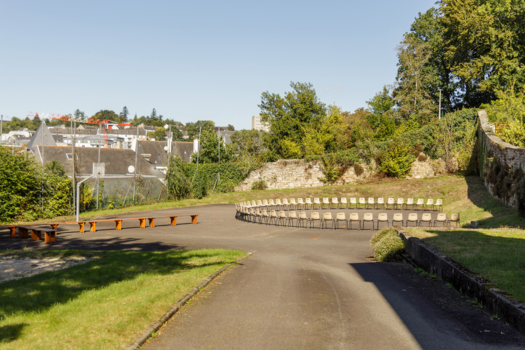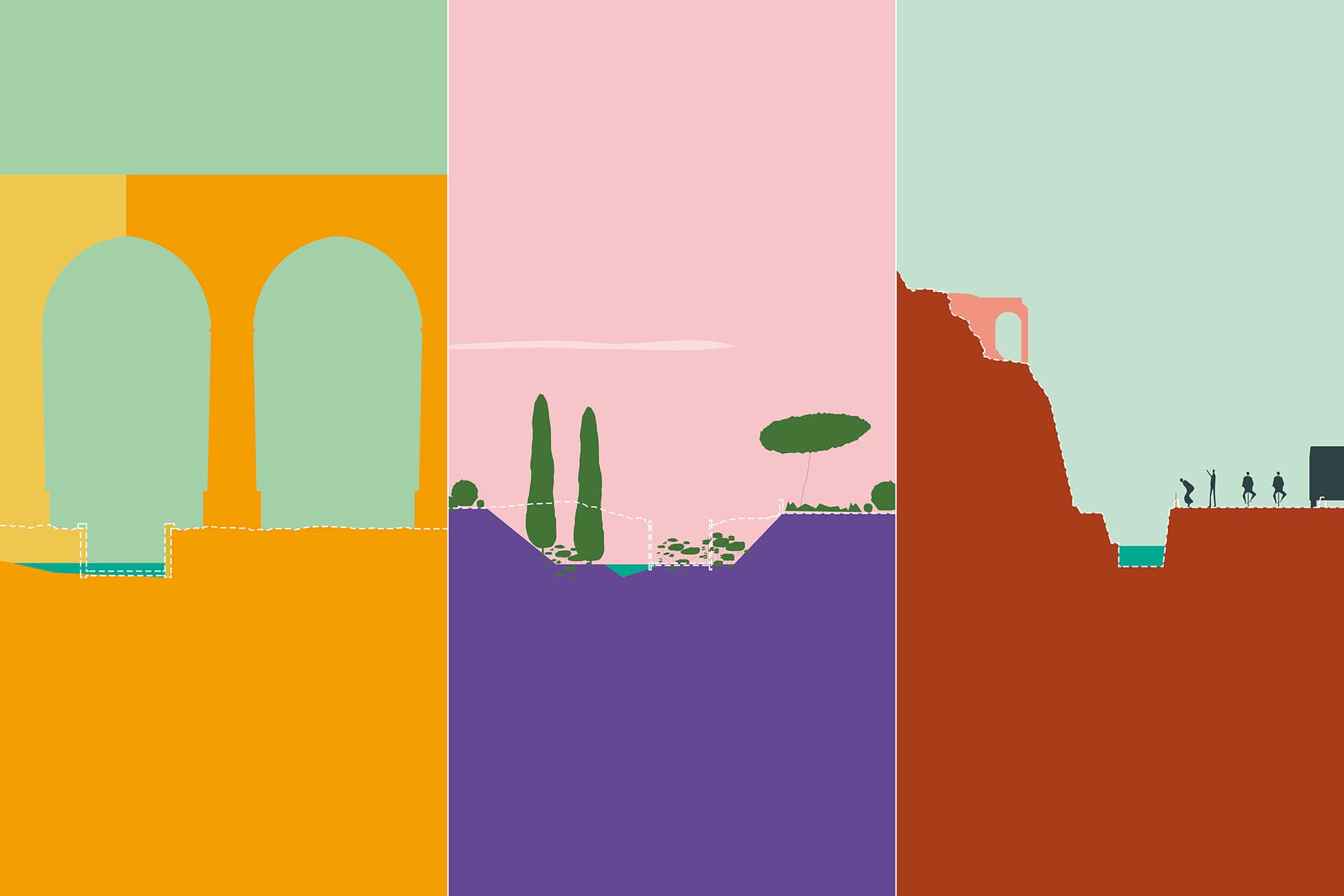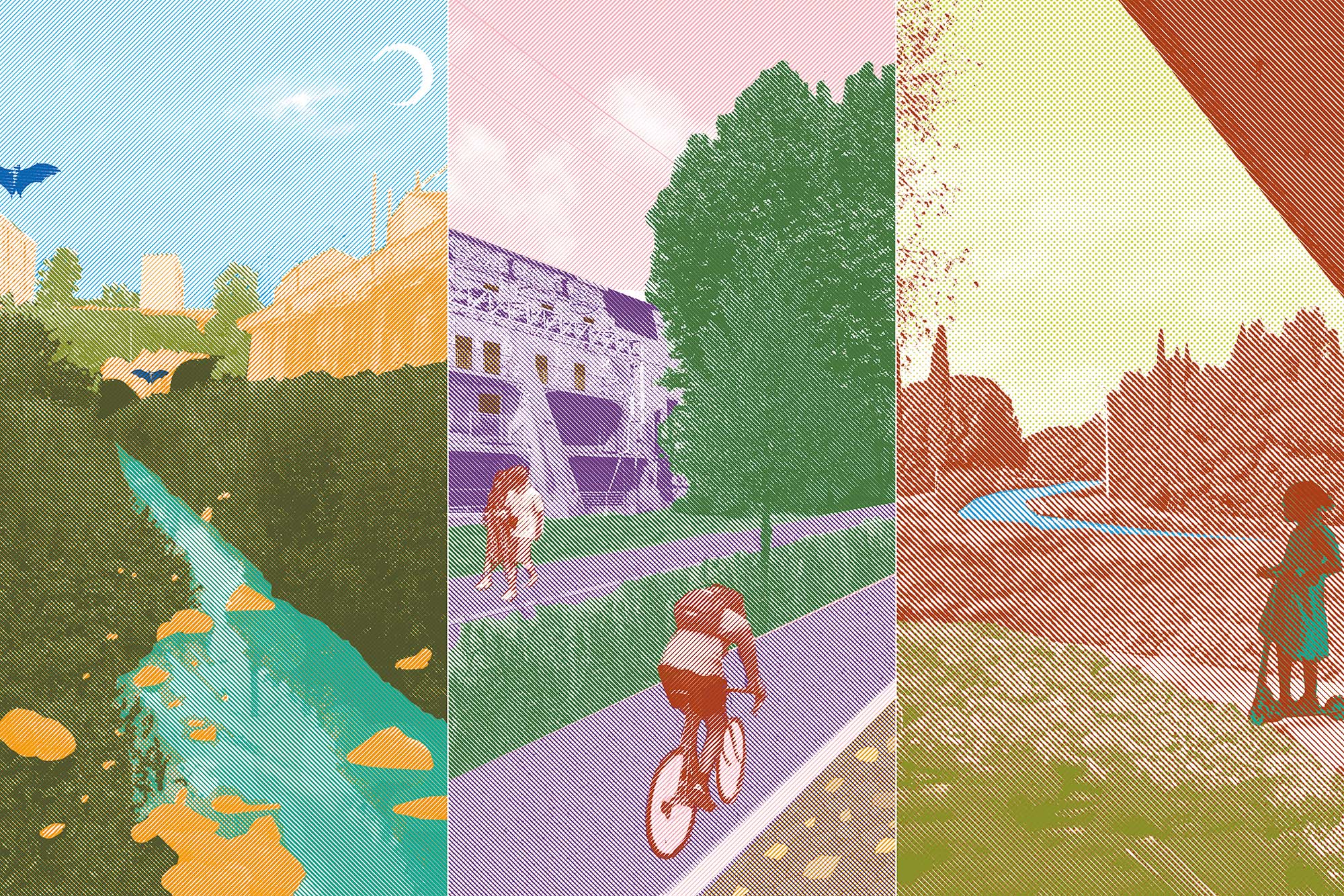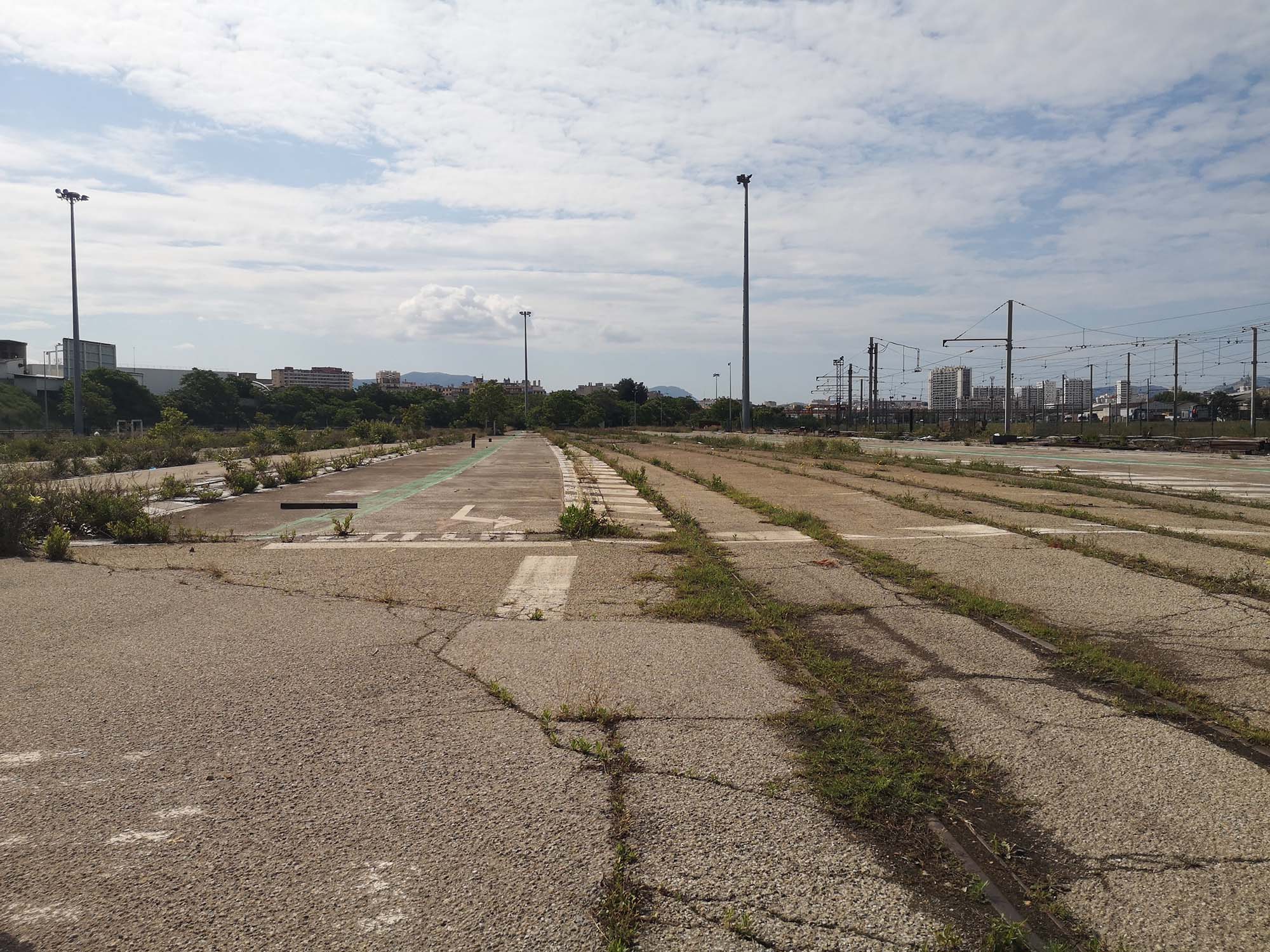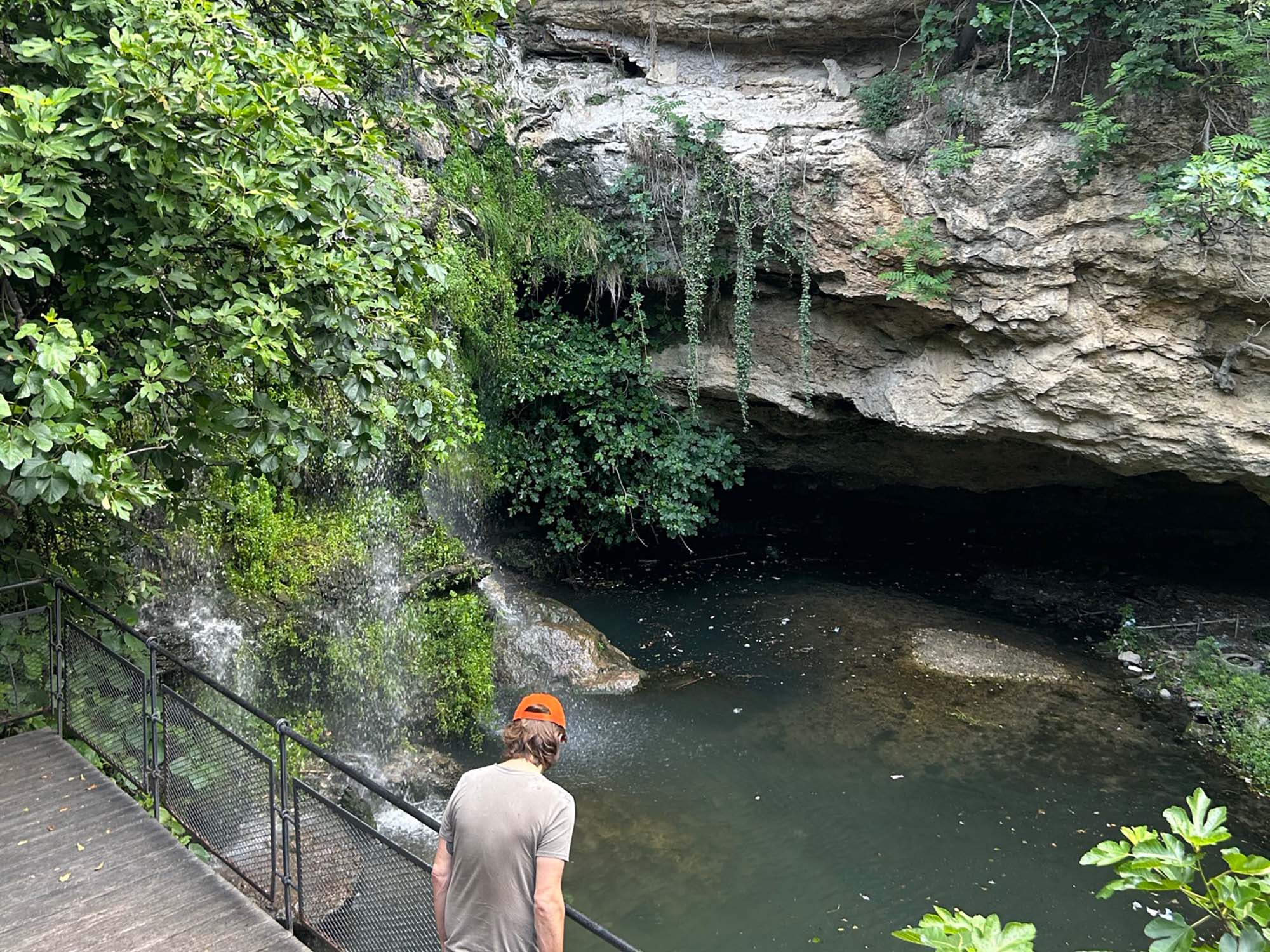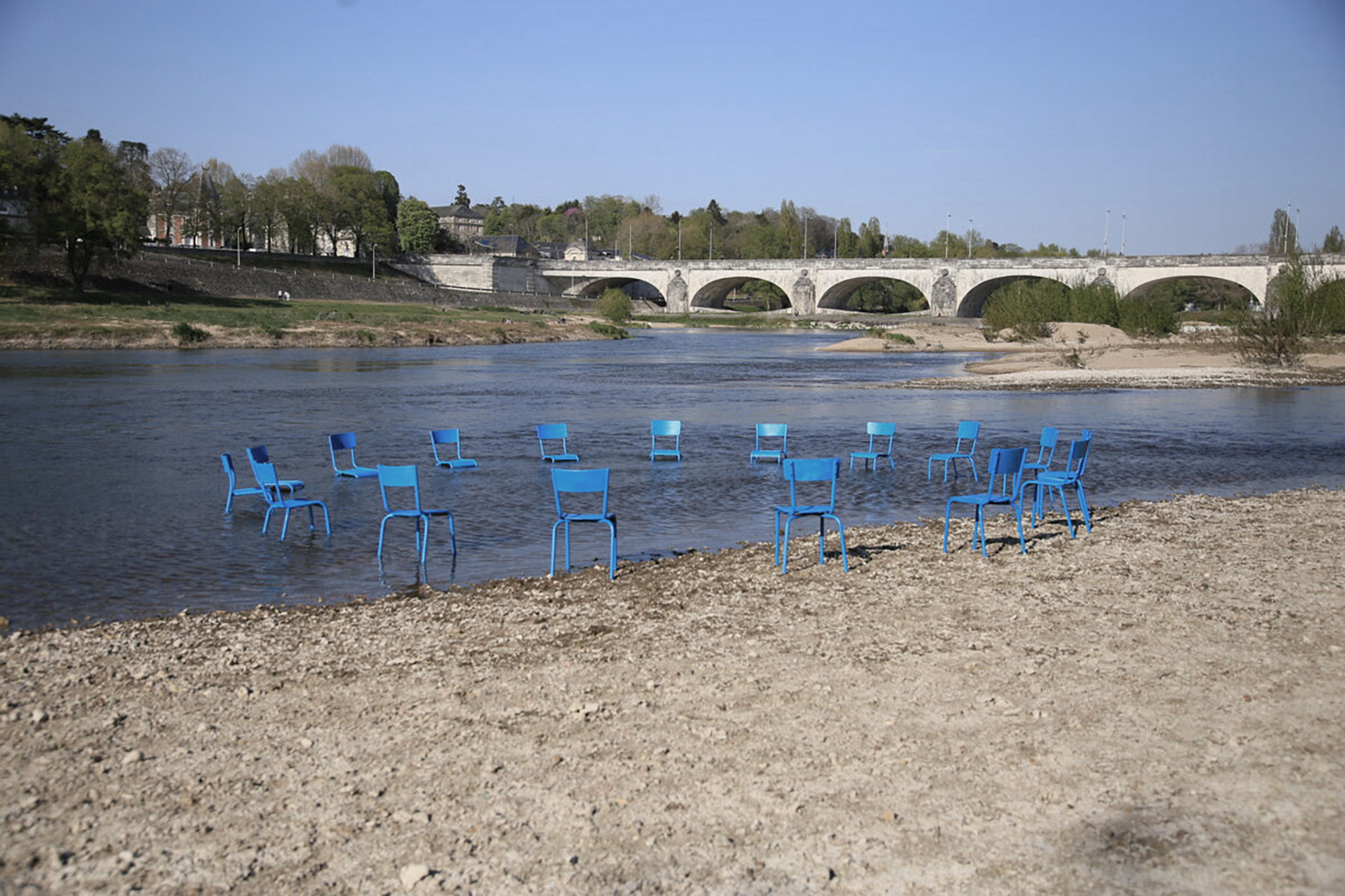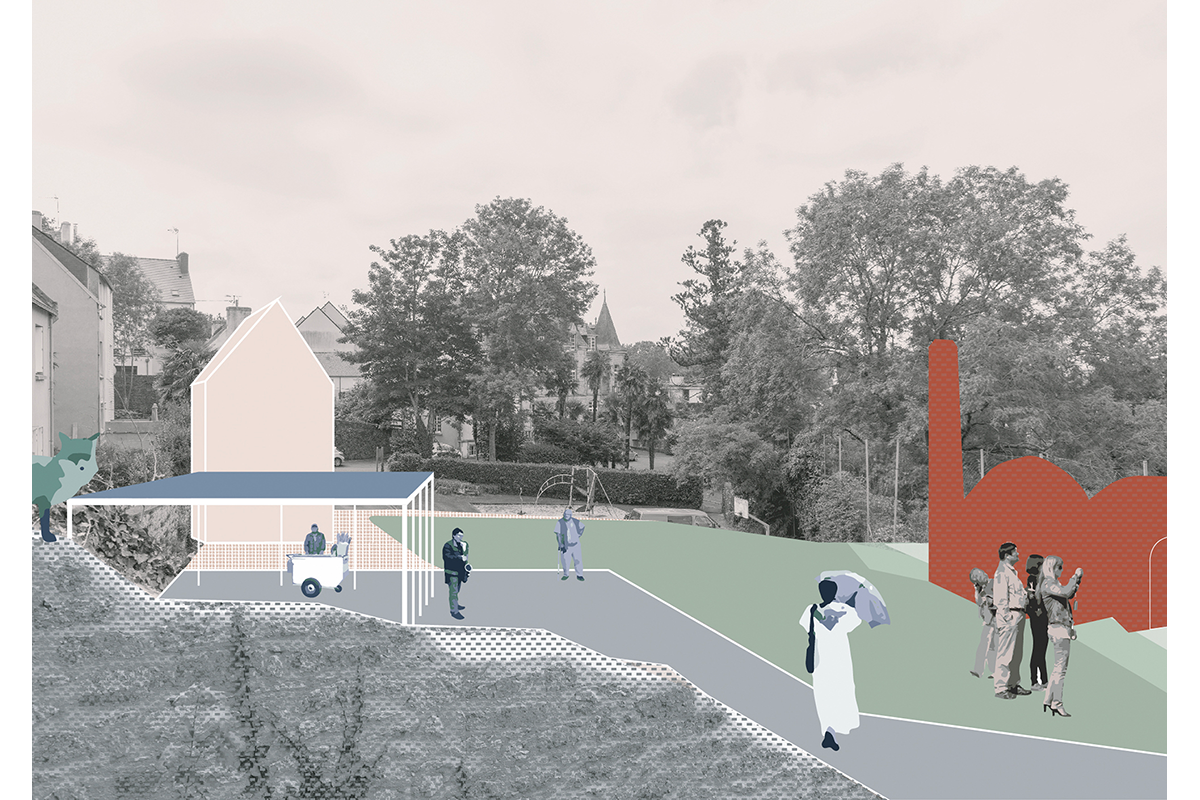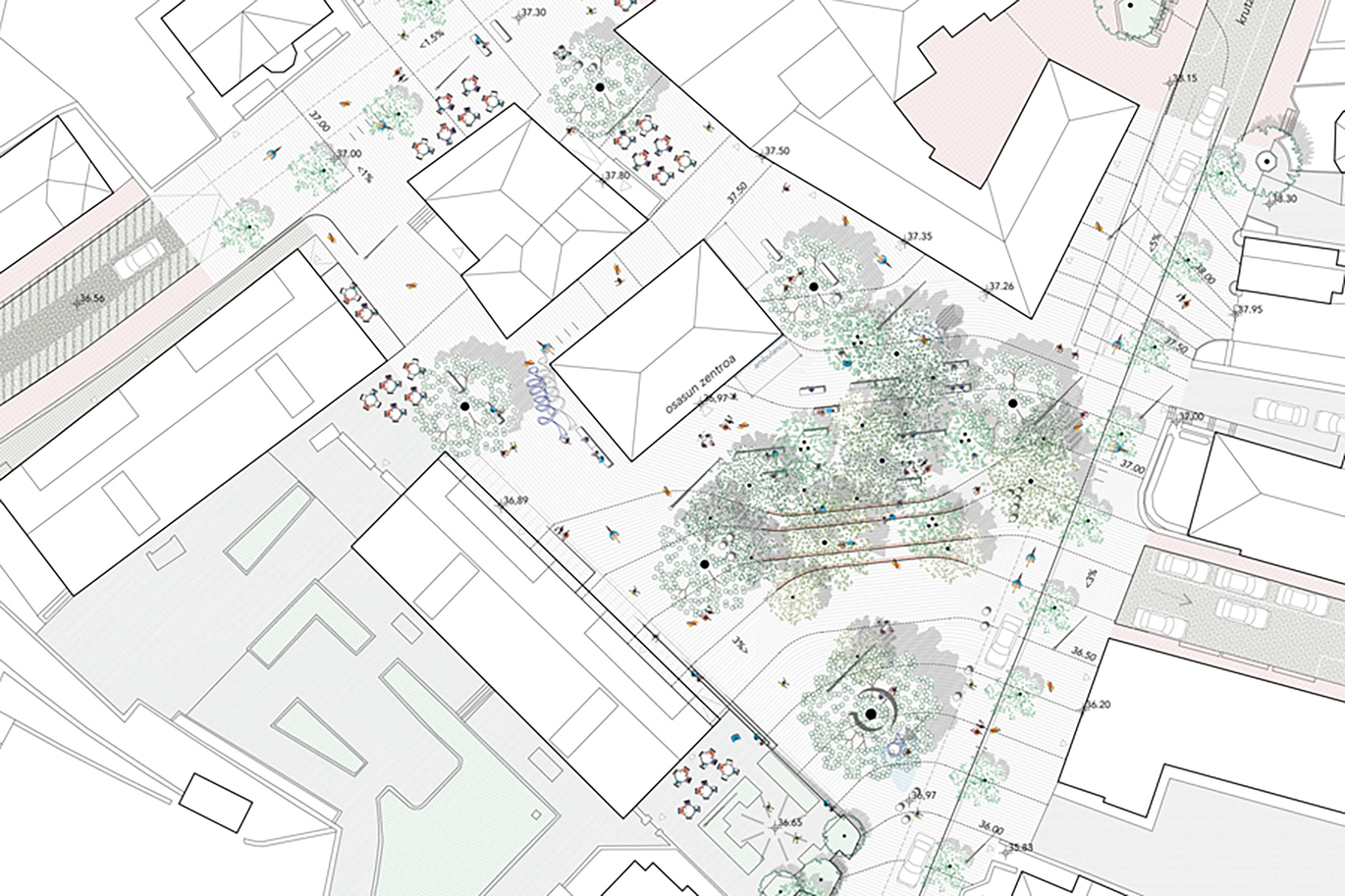Découvre-moi une rivière
Marseille (FR) - Lauréat
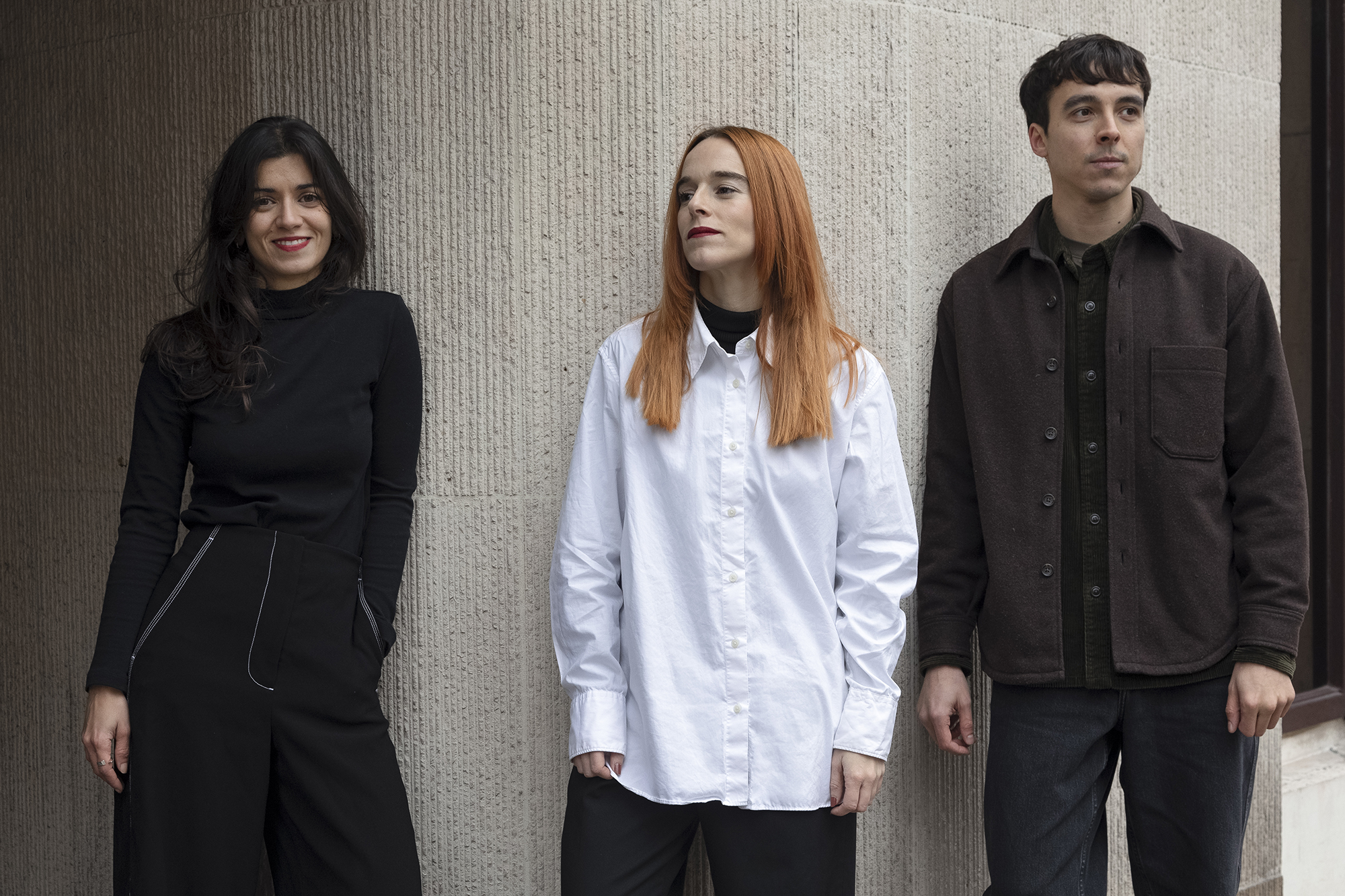
DONNÉES DE L’ÉQUIPE
Associés: Irati Lasa Amo (ES) – architecte urbaniste, Jihana Nassif (BR) - architecte urbaniste
Collaborateur: Antonin Bertrand (FR) – designer graphiste
ruee.architecture@gmail.com
ruee-architecture.com
TEAM PORTRAIT
VIDEO (by the team)
INTERVIEW
Click on the images to enlarge
1. How do you define the main issue of your project in relation with the theme “Living Cities Imagining architecture taking care of the milieus”? And in which way do you think your project can contribute to an ecological and/or social evolution?
The main issue in our proposal for Marseille is to rediscover the essence of the geography of this area in order to establish a new city-river relationship. The Aygalades stream has shown its resilience in the face of the physical, chemical and symbolic damage that industrial urbanisation and the way in which natural resources have been exploited have inflicted on it over the decades. The project is based first and foremost on this thread of water, and then widens the view to the geographical scale of the catchment area, giving it ecological sovereignty. Recognising the river as a living entity ensures its physical protection and establishes a symbiotic relationship with humans, based on co-evolution between the environment and communities. Careful renaturation is at the heart of this ecocentric approach, making it possible to restore the river's ecological status and to accommodate different hydrological episodes, including extreme ones.
2. How did the issues of your design and the questions raised by the site mutation meet?
The project proposes a common narrative for the Aygalades/Caravelle catchment area through a sensitive approach to the territory that goes beyond the geographical system and hydraulics, a cross-reading through three perspectives: 1. The meaning of water: the renaturation of the stream based on a new balance between the living entities of the river basin ecosystem. 2. Caring for the common good: the importance of relying on local initiatives, communities and institutions committed to caring for water, the environment and all forms of life. 3. The essence of places: the qualities of existing infrastructures and their potential for change, viewed through the prism of ecological sobriety. The three principles define a spectrum of actions that structure the ecocentric approach of the project: the creation of a large system of heterogeneous parks, with the Caravelle stream as its backbone. This vision of the territory is translated into three specific sites across the city, linked by water, people and infrastructure.
PROJECT:



To develop the Marseilles project, our research drew heavily on bioregionalist theories and biocultural rights to draw up a manifesto proposal.
The books "Les veines de la Terre. Une anthologie des bassins-versants by Marin Schaffner, Mathias Rollot and François Guerroué or "Être la rivière" by Sacha François-Gironde are part of our bibliography. Initiatives to assert the rights of watercourses have fed into our proposal: the pioneering case of the Whanganui River, recognised by the New Zealand Parliament in 2017, or the Parliament of the Loire in France, an initiative led by the inhabitants of the river basin.
Our approach was then structured around 3 main themes: renaturation, care and the relationship with existing infrastructures.
Renaturation
At Europan 16, we worked on the renaturation of the banks of the Odet in Quimper, as part of the Terre Glaz project: a linear park that reconfigures the south bank of the town by offering a new way of addressing the river and enhancing its estuary. Previously in our professional practice, the Garonne-Eiffel urban project in Bordeaux (developed within the TVK architecture and urban design studio) enabled us to explore the theme of water and the city-river relationship through various projects: the landscape of water in a built-up area with the Parc Eiffel and the restoration of wetlands in the Suzanne Lenglen sports garden.
Care
Our project for Europan 16 involved drawing up a forward-looking plan and action sheets for Roz Maria, a site housing a heritage villa and garden. The proposed working method consisted of conducting workshops with residents in three stages, which enabled us to understand the dynamics of the site and the expectations and desires of the residents, and to incorporate them into our study. For the Marseilles project, we were very inspired and nourished by the practice of the Gammares collective, which since 2018 has been looking after the Aygalades stream through a collective commitment mobilising the various local community players in the catchment area.
Infrastructure redevelopment
We are particularly interested in the transformation of infrastructure into a focus for the movement of people. The Porte de Montreuil development in Paris (developed by TVK studio) involves transforming a roundabout above the ring road into a metropolitan square. The urban project at Val de Fontenay (developed by TVK studio) raises the challenge of developing an area that is highly urbanised, intersected and marked by the presence of transport infrastructures.
Reference project: Renaturation of the Aire by Descombes Rampini, Parc du Peuple de l'Herbe by the TER agency (depollution). Atlas de Paysages de Paris by Paula Viganò, collective walks with Stalker, les Gammares collective.
SITE:



The concept of biocultural right attributes a form of sovereignty to the river over its territory and designates local communities as custodians of the site. This approach leads to the invention of new forms of governance, involving cooperation, multi-scale and multi-actor approaches, and citizen involvement.
Caring for the common good is expressed in three ways:
Care for the city through the life support network made up of organisations, facilities or associative environments (schools, hospitals, social centres) that are already engaged with the environment on their own scale and need to be supported.
The community formed around the stream, which is mobilising to ensure the political and social stability necessary for its well-being, and linking joint actions to bring together and organise the people involved. To ensure that projects and the various public water policies are consistent, the collective must encourage dialogue between techniques, local dynamics and public institutions.
Public authorities must commit to protecting the river by putting in place legislative mechanisms. Since the river's belated recognition in the 2018 bay contract, towns and cities have been working to include it in the "trame turquoise" and the GEMAPI. Given the threats to its ecosystem, it is time to take ambitious measures and declare the river a legal entity.
REFERENCES:
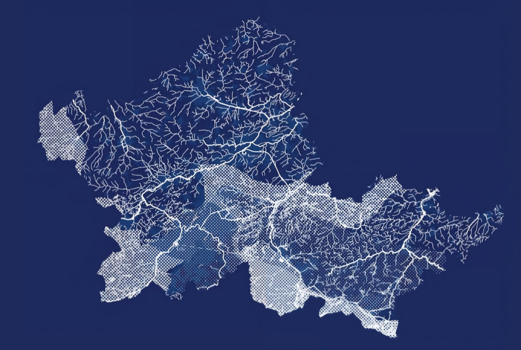


Ruée is an architectural-urban design duo, formed by Irati Lasa Amo and Jihana Nassif, is consolidating in 2022 after winning Europan 16. At the crossroads of public space, architecture and urban planning, we are developing a collaborative approach that links up with other disciplines such as art, ecology and anthropology. For the Marseilles project, we felt it was important to find a language that would allow us to share the data collected and express new ideas through communicative images. To that end, we approached graphic designer and typographer Antoine Bertrand, who worked with us right from the initial design stages.
6. How could this prize help you in your professional career?
Europan is a competition and a very interesting platform for professionals starting their own practice. The projects proposed involve contemporary issues linked to the challenges of our time, and the questions raised provide an opportunity to carry out research and guide the practice of urban planning architects and develop their convictions.
Europan is also a showcase for young agencies. Publications in various media help to promote our work, and events provide a forum for meeting and exchanging ideas with other professionals and city stakeholders, opening up the possibility of collaborations.
Finally, and equally important, Europan is a valuable opportunity to gain access to public commissions.
TEAM IDENTITY
Legal status: ruée architecture, Irati Lasa Amo architecte urbaniste et Jihana Nassif architecte urbaniste
Team name: ruée architecture
Average age of the associates: 34 years old
Has your team, together or separately, already conceived or implemented some projects and/or won any competition? if so, which ones?
Both of us (associate members, Ruée) have worked as a team in the same agency (Agence TVK) on studies and operational project management projects: Porte de Montreuil, Places du Grand Paris.
We won an award for Europan 16 with the Terre Glaz project on the Quimper site. Since then, we've been working with the town of Quimper and in collaboration with the other prize-winning teams in the ere collective, initially on an assignment to open up the Roz Maria site and bring it to life during the European Heritage Days (exhibition, scenography and events). We are currently carrying out a study to draw up a forward-looking plan and action sheets.
Ruée has taken part in public space and landscape competitions such as the project to redevelop the Place J.A. Agirre in Gorliz (ES) and the Chaumont-sur-Loire International Garden Festival (FR).
WORKS:

